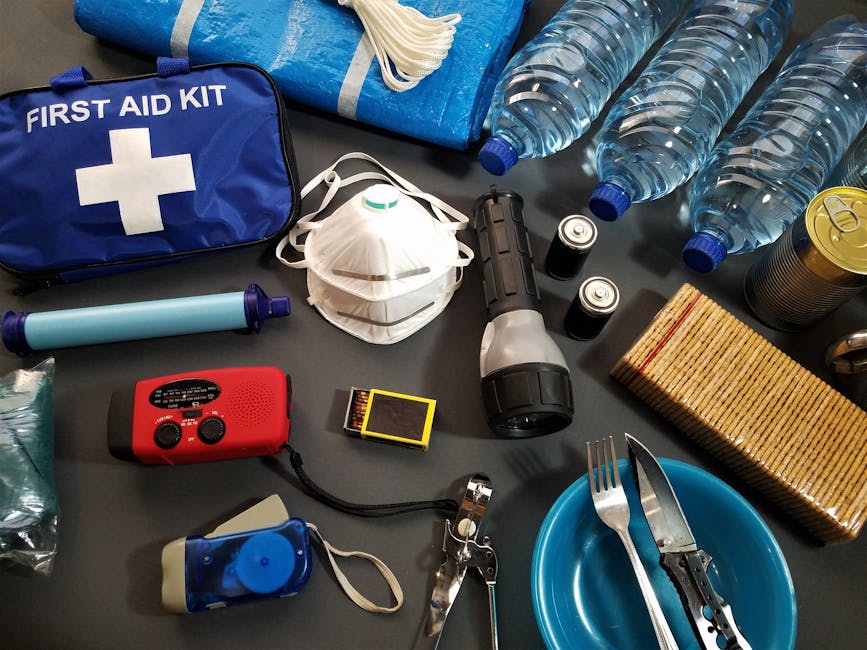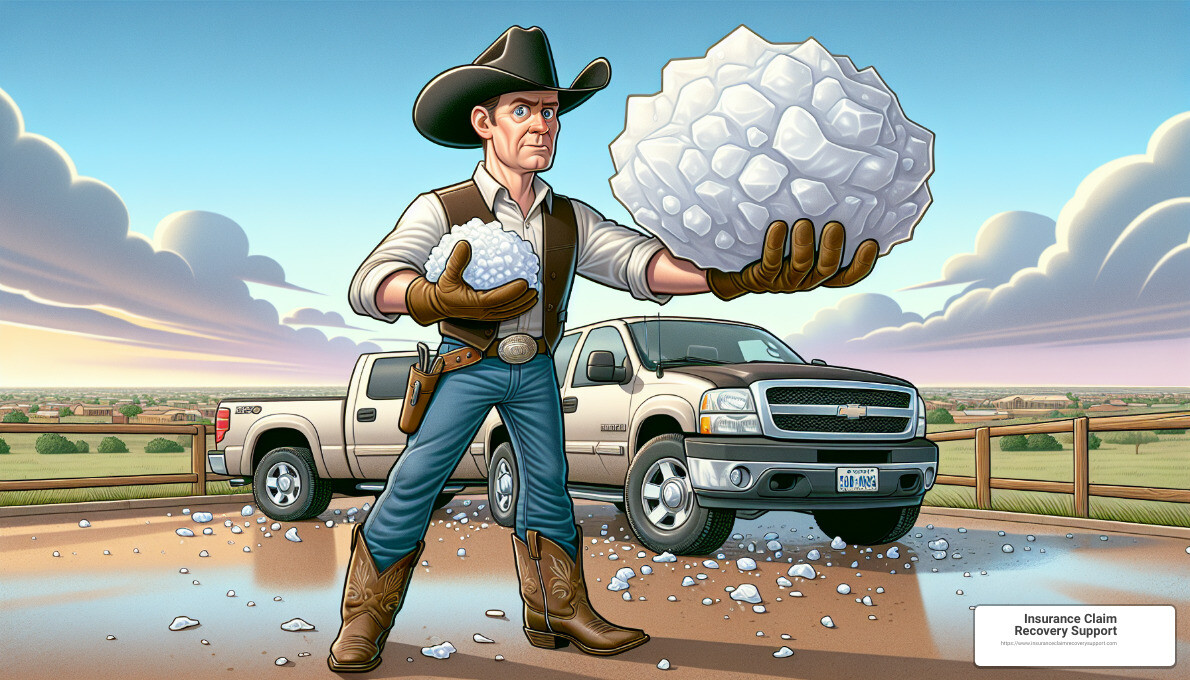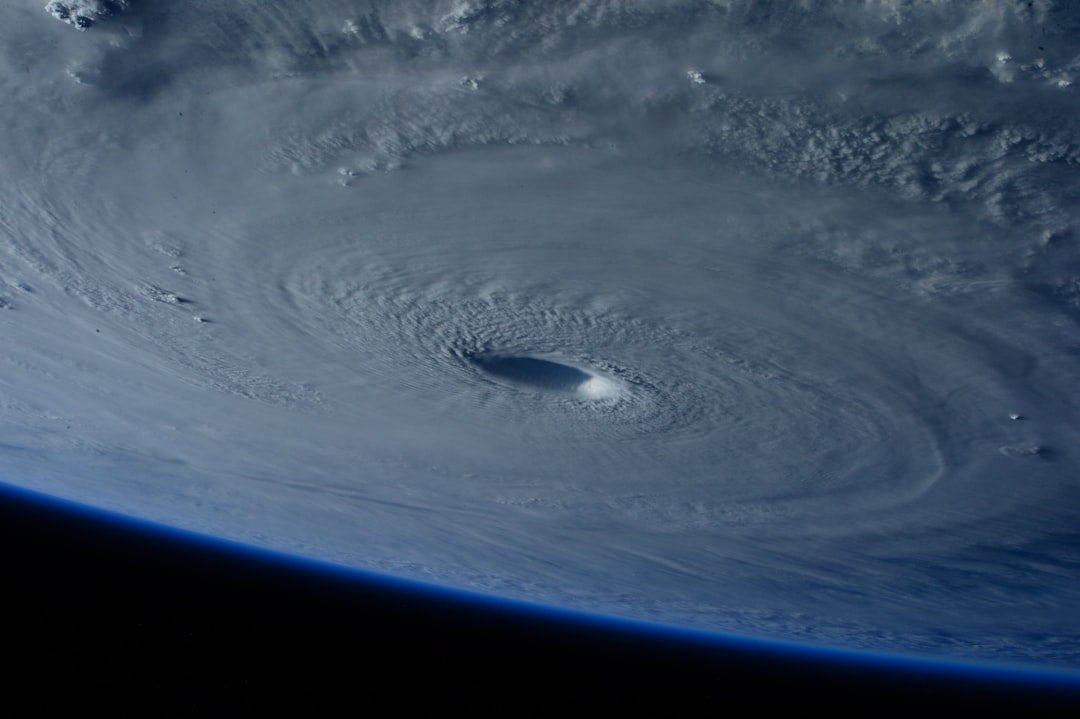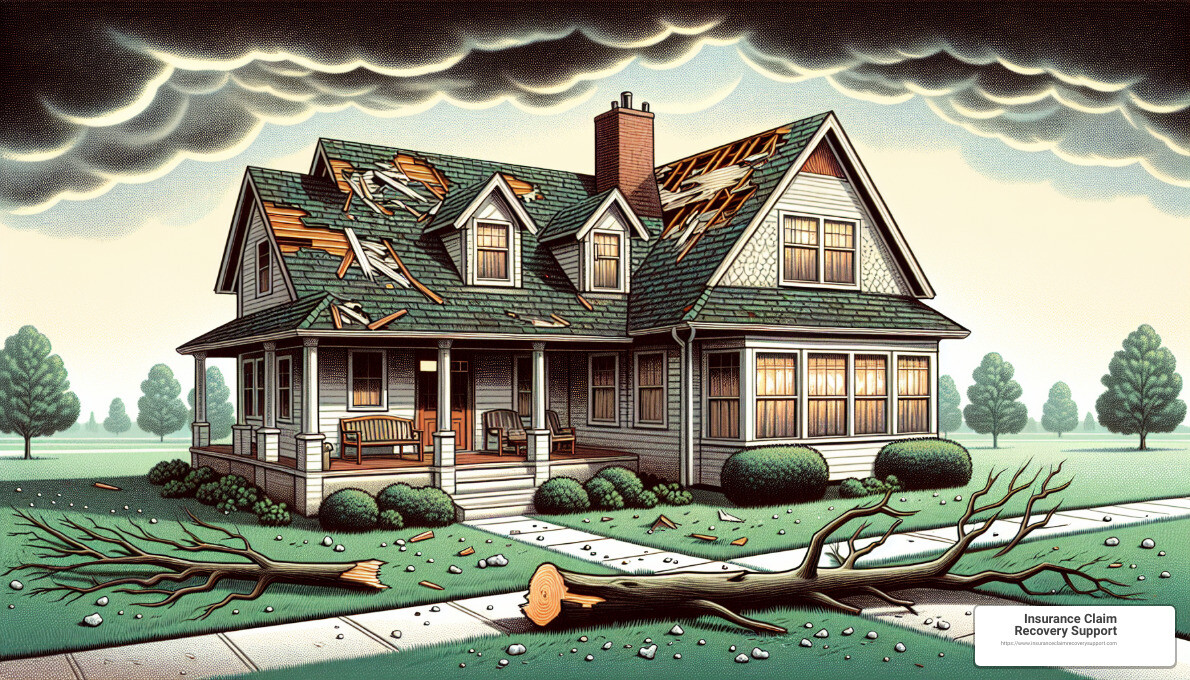Understanding Texas hail is crucial for anyone living, investing, or owning property in the state. Texas leads the United States in the number of wind and hail damage claims, with the weather phenomenon being notably severe and frequent here. Given the state’s vast size and geographical diversity, hail can vary dramatically in terms of size, impact, and seasonality.
Texas hail is shaped by powerful thunderstorms, particularly during the spring and summer months. Climate change plays a role in altering hail patterns, with evidence pointing towards larger hailstones due to more moisture and stronger updrafts in storms. Yet, hail can strike Texas any time of the year, causing significant damage to homes, vehicles, and commercial properties.
For residents and property owners in Texas, knowing the ins and outs of hail patterns and implementing safety measures can make a considerable difference in mitigating damage and navigating insurance claims successfully.

Understanding Texas Hail
Hail formation begins when updrafts in thunderstorms carry water droplets into extremely cold areas of the atmosphere. These droplets freeze and form ice. As these ice particles move around in the storm, they collide with other droplets and grow, layer by layer. Eventually, these hailstones become too heavy and fall to the ground.
Thunderstorms are a crucial part of the hail creation process. They provide the necessary conditions for hail to form: moisture, updrafts, and cold temperatures at higher altitudes. Texas, with its hot and moist air, is a prime location for these storms, especially in spring and summer.
The impact of climate change on hail is significant. Warmer temperatures mean smaller hailstones often melt before reaching the ground. However, this also leads to more moisture in the air and stronger updrafts, which can create larger and more damaging hailstones.
Seasonal patterns in Texas show that hail can occur at any time of the year, but there are peak times. Spring sees the most activity, with April being particularly notorious for hail damage. There’s also a secondary peak in the fall. Climate change may be extending the hail season, making it start earlier and end later than in the past.
Eric Bruning, a professor of atmospheric science, explains, “Hail requires thunderstorms and thunderstorms are driven by the hot and moist air near the ground. And so, spring and summer are the seasons that typically favor hailstorms.”
One of the largest hailstones recorded in Texas was a 6.4-inch, 1.3-pound monster that fell in Hondo in April 2021. This illustrates not just the potential size of hailstones but also the sheer power of the storms that produce them.
Despite the damage they can cause, hail and the supercells responsible for the most significant stones are challenging to study and predict. Forecasting a thunderstorm, as Bruning notes, is akin to predicting where a bubble will pop up in a boiling pan of water — unpredictable and complex.
To better understand and predict hail, scientists and volunteers across the country are collecting data in innovative ways, such as using hail pads and scanning hailstones with handheld infrared laser scanners. This data is crucial for creating models to predict hailstorms and understanding their impact.
In summary, understanding Texas hail involves recognizing the conditions that lead to its formation, the seasonal patterns that influence its occurrence, and the ongoing impact of climate change. This knowledge is essential for preparing and protecting against hail damage in the Lone Star State.
Texas’ Hail Alley Explained
When we talk about Texas’ Hail Alley, we’re actually extending our gaze beyond the Lone Star State. This unique zone stretches into parts of Nebraska, Colorado, and Wyoming. But, why is this area so notorious for hail? Let’s dive in.
Hail Frequency and Damage Statistics
-
Why So Much Hail? The simple answer: geography and weather patterns. This region is where warm, moist air from the Gulf of Mexico collides with cooler, dry air from the Rockies. When these air masses meet, they create the perfect storm—literally. Thunderstorms thrive in this environment, and with them, hail is a common guest.
-
Damage Statistics: Texas, being a part of this notorious Hail Alley, sees a significant amount of action. For instance, in 2021, a record-setting hailstone measuring 6.4 inches and weighing 1.3 pounds fell in Hondo, Texas. This is a testament to the kind of hail this region can produce. The National Insurance Crime Bureau reported an 84% increase in hail damage claims from 2010 to 2012, highlighting the growing impact of these weather events.
The Impact on Texas
-
Seasonal Patterns: While hail can occur at any time of the year in Texas, there’s a peak in spring and a secondary peak in fall. Historically, April has seen the most hail damage in Texas. However, climate change is likely lengthening the hail season, affecting the frequency and intensity of these events.
-
The Cost: Texas leads the nation in wind and hail damage claims. In 2012 alone, residents filed almost 50,000 claims. This not only speaks to the frequency of hailstorms but also to the severe damage they can cause. From shattered windows and dented cars to compromised roofs, the cost can be staggering.
What This Means for You
Living in or near Hail Alley, it’s crucial to be prepared. Understanding the hail frequency and the potential for damage can help you protect your property and ensure you’re adequately insured.
- Stay Informed: Keep an eye on weather forecasts, especially during peak hail seasons.
- Protect Your Property: Consider hail-resistant roofing materials and other protective measures to minimize damage.
- Insurance: Ensure your insurance coverage is sufficient to cover potential hail damage.
In summary, Texas’ Hail Alley is a region shaped by unique geographical and weather patterns, leading to frequent and sometimes severe hailstorms. By understanding the frequency, potential damage, and seasonal patterns, residents can take proactive steps to protect themselves and their property.
Major Texas Cities and Hail
In Texas, hail is not just a weather event; it’s a part of life, especially in the major cities. Each city has its unique challenges when it comes to dealing with hail. Let’s dive into how Texas’ major cities fare against hailstorms and what makes each location distinct.
Austin
Austin, the state capital, is known for its vibrant music scene and outdoor activities. However, it’s also familiar with hail’s disruptive power. Hailstorms have been known to damage homes, cars, and even disrupt outdoor events. The Mueller neighborhood, for example, has witnessed sizable hail that caused considerable damage.
Dallas
Dallas experiences a high frequency of hailstorms, making it a hot spot for hail damage. The city’s sprawling urban landscape is often littered with broken glass and damaged roofs after a severe hail event. Dallas’ position on the map makes it particularly vulnerable to these icy projectiles from the sky.
Fort Worth
Just west of Dallas, Fort Worth shares its neighbor’s hail woes. The city has seen its fair share of hailstorms, with ice balls damaging property and affecting daily life. In 1995, an outdoor event in Fort Worth was disrupted by hail, leading to hospitalizations, highlighting the potential for hail to not only cause property damage but also personal injury.
San Antonio
San Antonio, with its rich history and the famous Alamo, also faces the wrath of hail. The city has endured storms producing hail the size of tennis balls, causing widespread damage to homes and vehicles. Hailstorms here can be severe, leading to significant insurance claims.
Houston
Houston’s proximity to the coast adds a layer of complexity to its weather patterns. While less frequent, hailstorms do occur, often accompanied by other severe weather events like hurricanes, which can amplify the damage.
Lubbock
Situated in the northwest part of the state, Lubbock is in the heart of Texas’ “Hail Alley.” The city is no stranger to hail, with storms often bringing large, damaging hailstones that impact homes, businesses, and agriculture.
San Angelo
San Angelo has experienced some of the most severe hailstorms in recent history, with hail sizes reaching that of tennis balls. The city’s worst hailstorm in nearly three decades occurred recently, highlighting the increasing severity of these weather events.
Waco
Waco, located in the heart of Texas, is vulnerable to hailstorms, especially during the spring and fall. The city has seen significant hail events that have caused damage to roofs, vehicles, and windows.
Round Rock
Just north of Austin, Round Rock has experienced its share of hailstorms. The city has seen large hailstones that have damaged property and disrupted daily life. Hailstorm preparedness is a part of the community’s planning.
Georgetown
Georgetown, another city near Austin, has also felt the impact of severe hailstorms. Large hailstones have damaged homes and cars, reminding residents of the power of Texas weather.
Lakeway
Lakeway, located on the shores of Lake Travis near Austin, deals with hailstorms that can come in quickly and leave a trail of damage. The community is accustomed to monitoring weather forecasts closely, especially during hail season.
In summary, Texas’ major cities each have their unique experiences with hail but share the common challenge of dealing with its aftermath. From Austin’s vibrant neighborhoods to Lubbock’s agricultural lands, hailstorms are a unifying concern across the state. The stories of Carol Twilligear in Hondo and the widespread damage in San Angelo serve as reminders of hail’s impact. Understanding local weather patterns and implementing protective measures is crucial for minimizing hail damage.
Next, we’ll explore Safety Tips for Hail Storms to help you protect your property and loved ones from these icy projectiles.
Safety Tips for Hail Storms
When hail clouds roll in, Texas residents know it’s time to buckle down. Whether you’re in the bustling streets of Dallas or the quiet suburbs of Round Rock, being prepared can make all the difference. Here are some straightforward tips to keep you and your property safe.
Home Protection
-
Roofing Materials: Not all roofing is created equal. Opt for materials rated by the Insurance Institute for Business & Home Safety (IBHS) for hail resistance. Materials like impact-resistant asphalt shingles can withstand larger hailstones, reducing the risk of damage.
-
IBHS Rating System: Familiarize yourself with the IBHS rating system. It grades materials from Class 1 to 4, with Class 4 being the most resistant to hail. This system can guide you in choosing the best protection for your home.
Emergency Kits
- Be Prepared: An emergency kit is essential. Include water, non-perishable food, a first-aid kit, flashlights, batteries, and a weather radio. Don’t forget important documents in a waterproof container.
Seeking Shelter
-
Safe Room: Identify a safe room in your home, away from windows and on the lowest floor. This could be a basement, bathroom, or closet. When hail starts, head there immediately.
-
Vehicle Safety: If you’re caught driving, try to find shelter. This could be a covered parking lot or under a bridge. Avoid dents and broken windows by staying inside until the storm passes.
Practical Steps
-
Secure Outdoor Items: Hail can turn patio furniture and garden decorations into projectiles. Secure or move them inside before the storm hits.
-
Inspect and Maintain: Regularly check your roof for damage and wear. Small fixes now can prevent big problems later.
Community Preparedness
- Stay Informed: Sign up for local weather alerts and familiarize yourself with your community’s siren warning tones. Awareness can give you crucial minutes to act.

Remember, hailstorms can strike with little warning. By taking these steps, you can protect your home, reduce potential damage, and ensure the safety of your family. Next, we will delve into how Insurance Claim Recovery Support LLC can be your ally in navigating hail damage claims, ensuring you’re not alone in this process.
Insurance Claim Recovery Support LLC: Your Ally in Hail Damage Claims
When Texas hail strikes, the aftermath can feel overwhelming. That’s where Insurance Claim Recovery Support LLC steps in, ensuring you’re not navigating the complexities of hail damage claims alone. Let’s break down how they stand as a staunch ally for policyholders, focusing on advocating for your rights, maximizing settlements, and offering unparalleled expertise in property damage claims.
Advocating for Policyholders
First and foremost, Insurance Claim Recovery Support LLC champions your cause. In the wake of a hailstorm, understanding your insurance policy and asserting your rights can be daunting. This team is dedicated to ensuring your voice is heard. They work tirelessly to make sure insurance companies fulfill their obligations to you, the policyholder. This means they’re not just processing claims; they’re fighting for fairness and transparency on your behalf.
Maximizing Settlements
One of the most crucial aspects of dealing with hail damage is securing a settlement that truly covers the extent of your losses. Insurance Claim Recovery Support LLC excels in this arena. They meticulously document every aspect of the damage and apply their in-depth understanding of insurance policies to negotiate the best possible outcome for you. Their expertise means they can often uncover damages you might have missed, ensuring your settlement is comprehensive and just.
Property Damage Claims Expertise
Navigating hail damage claims requires a specific set of skills and knowledge, something the team at Insurance Claim Recovery Support LLC has in spades. They’ve seen it all, from golf ball-sized hail denting cars to baseball-sized hail breaking through roofs. Their experience means they can guide you through the claims process with ease, providing clarity and support every step of the way. Whether it’s assessing the damage, filing the paperwork, or negotiating with insurance adjusters, they have the expertise to handle it all.
Stay Informed: Knowledge is power, especially when it comes to protecting your property and securing what you’re entitled to after a hailstorm. Insurance Claim Recovery Support LLC offers a wealth of resources, from gathering evidence to meeting with insurance adjusters, ensuring you’re well-equipped to navigate the aftermath of Texas hail.
Remember, in the face of hail damage, you’re not alone. With Insurance Claim Recovery Support LLC by your side, you have a dedicated ally ready to advocate for your rights, maximize your settlement, and lend their expertise to your property damage claims. This partnership can make all the difference in turning a challenging situation into a manageable one, giving you peace of mind and the support you need to recover.
Frequently Asked Questions about Texas Hail
Why does Texas have so many hail storms?
Texas is a hotbed for hail storms due to a unique mix of thunderstorm dynamics, moist air, and strong updrafts. The state’s geographical location contributes to the mixing of warm, moist air from the Gulf of Mexico with cooler, dry air from the West and North. This clash of air masses creates ideal conditions for thunderstorms, which are the birthplace of hail.
- Thunderstorm Dynamics: Warm air rises, and when it meets the cooler air above, the water vapor condenses into droplets that can freeze into hailstones.
- Moist Air: Texas’ proximity to the Gulf of Mexico ensures a steady supply of moist air, fueling more frequent and intense thunderstorms.
- Updrafts: Strong updrafts in these thunderstorms carry water droplets high into the atmosphere, where they freeze and form hail.
What should I do immediately after a hail storm?
Immediately after a hail storm, prioritize your safety and assess the situation carefully. Here’s a quick guide:
- Safety Measures: Check for any immediate dangers, such as broken glass or exposed wires.
- Property Assessment: Once safe, assess your property for damage. Look for dents on cars, broken windows, or damage to the roof.
- Insurance Claims Process: Contact your insurance provider as soon as possible to start the claims process. Document all damages with photos and notes.
Remember, acting quickly can prevent further damage and streamline your recovery process.
How can I make my home more resistant to hail damage?
Making your home more resistant to hail damage involves a few strategic upgrades and preventive measures:
- Hail-resistant Roofing: Invest in roofing materials rated for hail resistance. The Insurance Institute for Business & Home Safety (IBHS) offers a classification system for roofing materials, with Class 4 being the most resistant.
- Protective Measures: Use protective coverings for windows and cars, especially if you live in a hail-prone area. Regular maintenance of trees and shrubbery can also reduce the risk of hail damage.
- IBHS Recommendations: Follow IBHS recommendations for building and landscaping to minimize hail damage. This includes using impact-resistant materials and designing landscapes to shield your home from hail.
By incorporating these strategies, you can enhance your home’s resilience against hail, potentially saving you time, money, and stress in the long run.
Remember that preparation and knowledge are key to navigating Texas hail. Whether it’s understanding the reasons behind frequent hail storms, taking immediate action post-storm, or fortifying your home against future hail damage, every step you take can contribute to a smoother recovery process. And with Insurance Claim Recovery Support LLC as your ally, you have access to the expertise and support necessary to tackle hail damage claims effectively.
Conclusion
Hail storms in Texas are more than just a weather phenomenon; they’re a reminder of the power of nature and the importance of being prepared. As we’ve seen, the Lone Star State’s unique climate and geographical features make it a hotspot for these icy projectiles. But with the right knowledge and precautions, Texans can protect their homes, vehicles, and loved ones from the worst of the damage.
Preparation is crucial. Before hail season hits, take the time to inspect your home, especially the roof and windows, for vulnerabilities. Consider investing in hail-resistant roofing materials and protective coverings for your vehicles. Simple steps like trimming tree branches and securing outdoor furniture can also minimize potential damage.
The importance of insurance cannot be overstated. Comprehensive coverage is your financial safeguard against the unpredictable wrath of Texas hail. It’s not just about repairing damages; it’s about ensuring peace of mind during hail season. The aftermath of a hail storm can be overwhelming, but having the right insurance policy means you’re not facing it alone.
Lastly, should the inevitable happen, know that Insurance Claim Recovery Support LLC is here to help. We specialize in advocating for policyholders, maximizing settlements, and bringing expertise to your property damage claims. Our team understands the complexities of hail damage and insurance policies, and we’re committed to ensuring you receive the compensation you deserve.
In the wake of a hail storm, it’s easy to feel lost in the chaos. But with preparation, the right insurance, and a trusted ally like Insurance Claim Recovery Support LLC, you can navigate the recovery process with confidence. Don’t let Texas hail catch you off guard. Take action today to protect your tomorrow.









